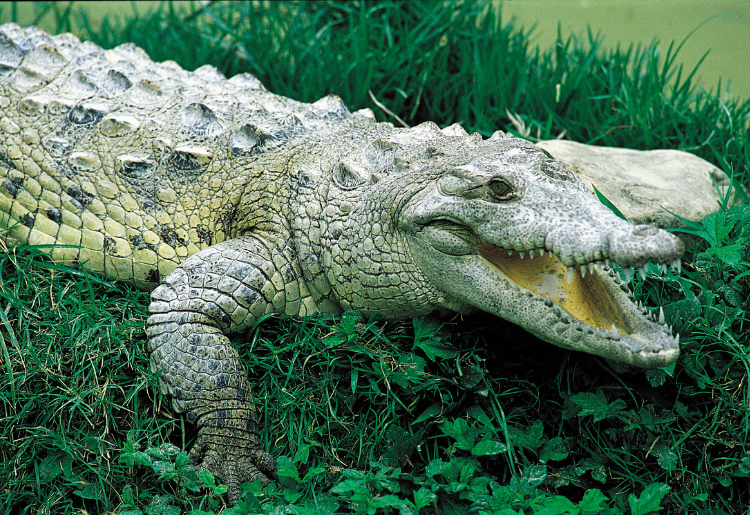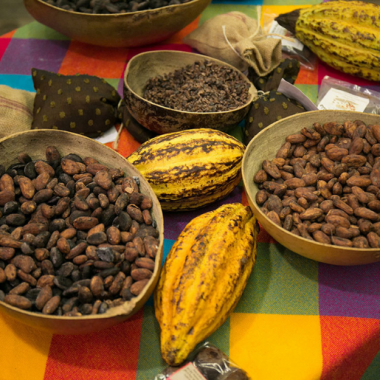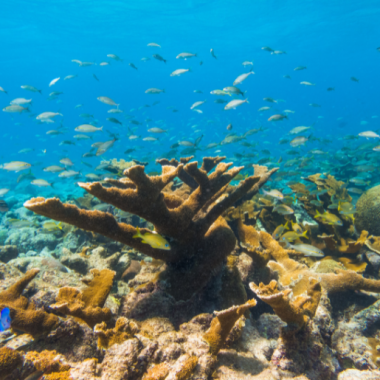Zoos in the Caribbean allow visitors to get a closer look at wildlife in the Caribbean without putting their lives in danger. As a child, one of my favourite tours was visiting the now-defunct Oughterson Zoo in Barbados. I can still remember the moment one of the handlers took a long, fat snake out of its enclosure and we all ran away screaming for our lives. Good times.
Although the existence of zoos and keeping animals in captivity are controversial, many Caribbean zoos are focused on animal conservation and habitat preservation. Zoos often include educational components to their offerings which teach visitors about the animals. There are also volunteer opportunities for anyone interested in an animal care career or looking to assist the zoos with their work.
Zoos in the Caribbean
Some of the zoos in the Caribbean are:
- Philip’s Animal Garden (Aruba)
- Marine Habitat at Atlantis (Bahamas)
- Ardastra Gardens & Wildlife Conservation Centre (Bahamas)
- Wildlife Reserve (Barbados)
- Marizayra’s Sanctuary (Barbados)
- The Belize Zoo (Belize)
- Bermuda Aquarium, Natural History Museum and Zoo (Bermuda)
- Donkey Sanctuary Bonaire (Bonaire)
- Turtle Farm (Cayman Islands)
- National Zoological Park (Dominican Republic)
- The Guadeloupe Zoo (Guadeloupe)
- Hope Zoo (Jamaica)
- St. Maarten Zoo (St. Maarten)
- Zoo de Martinique (Martinique)
- Coral World Ocean Park (U.S. Virgin Islands)
Philip’s Animal Garden (Aruba)
Philip’s Animal Garden is one of the many zoos in the Caribbean that operates as a non-profit organisation. It was founded in 2009 and to this day it still rescues and rehabilitates exotic animals in Aruba. The story of the garden begins with Philip, the man behind the vision. He designed the layout of the facility and structures and built the cages from scratch. His goal is to stabilise the population of exotic animals in Aruba that are close to extinction.
Address: Alto Vista 116, Noord, Aruba
Telephone: +297 – 5935363
Website: Philip’s Animal Garden
Marine Habitat at Atlantis (Bahamas)
The Marine Habitat at Atlantis in Bahamas is an incredible display of marine habits and exhibits. It is the largest open-air marine habitat in the world and consists of 14 lagoons, and more than 50,000 animals which represent over 250 marine species. The habitat is organised into various sub-habitats namely The Dig, Ruins Lagoon, Predator Lagoon, the Mayan Temple Shark Lagoon, Cenote, Estuary Lagoon, Reef Lagoon, Hibiscus, Seagrapes Lagoon, Stingray Lagoon, Royal Ray Lagoon and Water’s Edge Lagoon.
Address: Atlantis Paradise Island, One Casino Drive, Paradise Island, The Bahamas
Telephone: +1-888-877-7525
Website: Atlantis Marine Habitat
Ardastra Gardens & Wildlife Conservation Centre (Bahamas)
Jamaican horticulturalist, Hedley Edwards created a nature preserve that exuded tranquility and peace. This preserve was named Ardastra and soon became a haven and breeding programme for the Caribbean flamingo. The gardens were purchased by Norman Solomon in 1980 and he grew the gardens into an even bigger attraction. He relied on his knowledge and experience with wildlife and conservation education to add more animals to the habitat. Today, there are over 135 animals in the gardens and the flowers are blooming just as beautifully as they did back in 1935.
Address: Chippingham Rd, Nassau, The Bahamas
Telephone: +1-242-323-5806
Website: Ardastra Gardens
Wildlife Reserve (Barbados)
Located in the historic Farley Hill, St. Peter area, the Barbados Wildlife Reserve is a peaceful habitat that allows animals to live in a natural habitat. The reserve consists of a four acre mahogany forest next to the Grenade Hall Signal Station. It was founded in 1982 as the Barbados Primate Research Centre with the aim of conserving and studying green monkeys. The reserve is now home to deer; armadillo; agouti; green monkeys; reptiles such as snakes, caimans, turtles and iguanas; and birds such as parrots, peacocks and flamingos.
Address: Farley Hill, St. Peter, Barbados
Telephone: +1-246-422-8826
Website: Wildlife Reserve
Marizayra’s Sanctuary (Barbados)
In the east of Barbados lies an animal sanctuary which had humble beginnings as a rescue home for animals. Ryan Inniss, owner of the sanctuary, has been able to expand the sanctuary to include a variety of exotic animals. Visitors to the habitat can get up close to snakes, birds, iguanas, tortoises, cane toads and green monkeys. This is a recommended activity for families and children because it is an intimate learning experience which teaches about the animals in the sanctuary.
Address: Harrismith Road, Well-House St. Philip
Telephone: +1-246-259-2024
Website: Marizayra’s Sanctuary
The Belize Zoo (Belize)
In 1983, Sharon Matola started the Belize Zoo in an effort to save animals who were used in documentaries. This selfless effort soon became an educational tool that taught residents and visitors about wildlife in Belize. Its focus is on wildlife conservation and is now home to over 200 animals which represent over 45 native species. The Belize Zoo is now one of the best zoos in the Caribbean and is a fully accessible attraction which accommodates wheelchairs, strollers, and walkers.
Address: P.O Box 178 Belmopan, Cayo District, Belize
Telephone: +501 613-4966
Website: The Belize Zoo
Bermuda Aquarium, Natural History Museum and Zoo (Bermuda)
The Bermuda Aquarium, Natural History Museum and Zoo is a government owned initiative that is run by the Department of Environment and Natural Resources. Founded in 1926, BAMZ is a seven-acre facility that facilitates science education, species conservation and animal research. The Bermuda Aquarium is one of the world’s oldest aquariums and the collective body is accredited by the Association of Zoos & Aquariums. The aquarium, zoo and museum collectively showcase over 200 species of fish and over 200 birds, reptiles and mammals.
Address: 40 N Shore Rd, Flatts Village, Bermuda
Telephone: +1 441-293-2727
Website: Bermuda Aquarium, Natural History Museum and Zoo
Donkey Sanctuary Bonaire (Bonaire)
The Donkey Sanctuary was opened in 1993 to care for sick, injured and orphaned donkeys. Marina Melis and Ed Koopman, a Dutch couple, are the brains behind the sanctuary. Since inception, they have rescued hundreds of donkeys and now the population at the sanctuary is over 700. Visitors to the Donkey Sanctuary and take part in feeding the animals and there is also a garden with iguanas, tortoises and flamingos. There is also a souvenir shop on the site which explains the role of the sanctuary. All funds collected from purchases go towards the care of the animals.
Address: 71 Kaya IR. Randolph Statius van Eps, Kralendijk, Bonaire
Telephone: +599 9 560 7607
Website: Donkey Sanctuary Bonaire
Cayman Turtle Centre (Cayman Islands)
The Cayman Turtle Centre is a thrilling educational, cultural and entertaining experience. Although when it was started in 1968 as a sea turtle conservation project, but it has expanded to include birds, reptiles and the development of a mangrove ecosystem. The centre engages in a rich research and conservation programme which includes publishing scientific papers and turtle releases. Visitors can get a firsthand view of the centre’s work through two available tours – the turtle adventure tour and the turtle safari.
Address: 786 Northwest Point Road, West Bay, PO Box 812 Grand Cayman, KY1-1303, Cayman Islands
Telephone: +1 345 949-3894
Website: Cayman Turtle Centre
National Zoological Park (Dominican Republic)
With the majority of its over 125 hectares of its landscape dedicated to its animals, the National Zoological Park is one of the best zoos in the Caribbean. Located in Santo Domingo in the Dominican Republic, the zoo is home to many species of birds, animals and reptiles. Elephants, lions, parrots, cranes, flamingos, lizards and crocodiles are some of the zoo’s residents. ZooDom also has an active conservation programme which receives several protected species from around the country each year. The zoo works to return these animals back to the wild.
Address: Avenida La Vega Real (Antigua Ave. Los Arroyos) Arroyo Hondo Santo Domingo
Telephone: +1 809-378-2149
Website: National Zoological Park
The Guadeloupe Zoo (Guadeloupe)
The Guadeloupe Zoo is located on the Mamelles Mountains and is a Caribbean zoo with animals from all over the region. Lovingly called the “riches of nature”, animals include monkeys, ocelots, jaguars and parrots. There is also an insect exhibit which showcases many of the creepy crawlies on the island. In total, there are over 450 animals and 85 different Caribbean species at the zoo. The zoo also allows guests to meet with staff, so that they can learn more about the zoo and its animal protection programmes.
Address: Route de la Traversée, D23, Bouillante 97125, Guadeloupe
Telephone: 0590.98.83.52
Website: The Guadeloupe Zoo
Hope Zoo (Jamaica)
The Hope Zoo in Jamaica showcases a variety of animal species which are displayed in a specific concept layout. The Jamaican Paradise is home to species that are found on the island. Then, there is the African Outpost which is home to animals and birds including the African lion and lioness. Additionally, there is the American Jungle, which brings together animals from the American continent. The mission of the Hope Zoo includes public education, conservation and research and development. There is also an active volunteer programme for students from schools in Jamaica.
Address: Old Hope Road, Kingston 6, Jamaica
Telephone: +1 876-927-1085
Website: Hope Zoo
Martinique Zoo (Martinique)
The Martinique Zoo is an award-winning attraction that sits on the remains of the old Habitation Latouche sugar plantation. Many of the plantation’s artifacts are still on the site, and thus create a unique setting for visitors. Animals in the zoo come from Australia, Africa, Central America and South American. The habitat is home to animals such as monkeys, jaguars and raccoons are interspersed between the ruins, wooden paths and panoramic views. Additionally, visitors can learn about Martinique’s culture and history and its development over the years.
Address: Anse Latouche, Le Carbet 97221, Martinique
Telephone: +596 596 52 76 08
Website: Martinique Zoo
Coral World Ocean Park (U.S. Virgin Islands)
Coral World Ocean Park in the United States Virgin Islands is a thrilling experience that exposes guests to sea life. The park consists of five acres of aquariums, pools, nature trails and a dolphin sanctuary. Coral World’s exhibits include a touch pool, turtle pool, shark swallows, a Caribbean reef, a stingray lagoon, an undersea observatory and talks and feeding sessions. The undersea observatory is a Caribbean first where visitors can view marine life without getting wet. It stands one hundred feet offshore and goes as deep as 15 feet below the sea surface.
Address: 6450 Coki Point Rd. St. Thomas, USVI 00802
Telephone: +1 340 775-1555 ext. 233
Website: Coral World Ocean Park
Image Credit: Dominican Republic Ministry of Tourism











